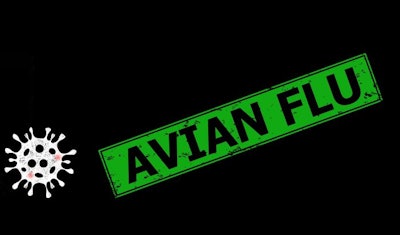
In a recent review, European health authorities conclude that the highly pathogenic avian influenza (HPAI) situation continues to evolve — not only in Europe but globally. New cases continue to be reported in birds, both wild and domestic, as well as in mammals. This is according to the latest update is from the European Food Safety Authority (EFSA), the European Centre for Disease Prevention and Control (ECDC), and the EU reference laboratory.
In poultry, the peak for infections in the current season was in November of last year. For the study period of December 2022 to March of 2023, the number of new outbreaks in poultry has declined, according to EFSA and the other agencies.
However, the report’s authors warn that a resurgence in outbreaks affecting poultry might be seen in the coming months. This is because of the spring migrations of wild birds — and especially of gulls, which have been particularly affected by the circulating HPAI virus. These birds could carry the infection as they move to inland areas where poultry production is more concentrated.
Ongoing studies of genetic changes in virus indicate a growing risk of transmission to mammals. Furthermore, there are documented cases of infections in people, mainly following close contact with infected poultry. Nevertheless, ECDC assesses the current risk of infections to be low for the general public.
In Europe, 522 outbreaks of HPAI were reported in domestic poultry and 1,138 in wild birds during the study period, according to EFSA. Occurring in 24 countries across the continent, these were all linked to the HPAI A(H5N1) virus of the clade 2.3.4.4b.
2023 HPAI outbreak total in commercial poultry nears 200
So far in 2023, 194 outbreaks have been reported in commercial poultry flocks across Europe. This is based on the latest update of the EC’s Animal Disease Information System of the European Commission (EC; as of March 3).
One or more outbreaks have occurred in 16 countries covered by the EC since the start of the year. These include Estonia and Slovenia, where first outbreaks of the year were confirmed around the start of this month.
Based on information supplied to the EC, France has the highest number of outbreaks (62 so far this year), followed by Poland (56). These represent increases of three and one to the respective totals since the EC’s previous update dated February 25.
These two nations are followed by the Czech Republic with 20 outbreaks since the start of 2023, Hungary with 18, and Germany with 15. Each of the other countries has a total so far of no more than four outbreaks.
Five European nations register new cases on farms
Since the start of March, Hungary’s animal health agency has officially registered 17 HPAI outbreaks on poultry farms. According to recent notifications to the World Organisation for Animal Health (WOAH), 14 of these were in Bacs-Kiskun, and three in Bekes. Both located in southern Hungary, these counties have been the location of 98 and five outbreaks, respectively, since November of 2022.
Over the period February 22 to March 1, the French authorities have notified WOAH of a further four outbreaks on commercial farms. Each with between 120 and around 23,400 birds, the affected premises were all in different departments and regions of the country. Among those affected was the first in Eure, a department in the northwestern region of Normandy.
Since the first cases of HPAI linked to the H5N1 virus serotype were detected in France in November of 2021, 1,687 outbreaks have been reported to WOAH. Directly impacted through mortality or culling have been more than 20.75 million commercial poultry.
According to the agriculture ministry, 313 farm outbreaks have been confirmed on mainland France since August 1 last year. Affected have been flocks in all 12 regions, and in 31 departments.
So far this month, Germany has registered two further HPAI outbreaks on poultry farms with WOAH. While one was in the southeastern state of Bavaria, the other was in Mecklenburg-West Pomerania in the northeast of the country.
There has been one further outbreak on a farm in northwest England. This brings to 175 the number of confirmed outbreaks on commercial premises in the United Kingdom (U.K.) since October of 2022. This is according to the latest update by the government agriculture department, Defra.
Italy has recorded its first HPAI outbreak in poultry since the start of this year.
Based on the WOAH notification, affected was a flock of meat turkeys in the northern region of Veneto. Around 50 birds showed symptoms but the size of the flock is not reported. Source of the virus — also the H5N1 serotype — is unknown.
Further outbreaks recorded in captive birds
As of March 3, 10 European nations have notified the EC’s System of HPAI cases in “captive birds” since the start of 2022. Covering backyard and hobby poultry flocks as well as premises such as zoos, the total stands at 67 across the region for the year so far.
Affected since the start of January have been 24 premises in Germany, 23 in France, and eight in Belgium. Each of the other seven countries has recorded no more than four outbreaks in this category.
Since the start of March, 13 outbreaks in this category have been registered with WOAH by the German authorities. Affected premises — one zoo and the rest in backyard poultry flocks — have been identified in six different states.
Also confirming with WOAH further outbreaks in non-commercial poultry flocks have been Belgium, the Czech Republic, Hungary and Poland.
Europe’s wild bird outbreak total this year passes 1,000
So far this year, a total of 1,034 outbreaks of HPAI have already been registered through the EC’s System by 22 European states (as of March 3).
With 270 outbreaks in this category, Germany has confirmed the most outbreaks. This is an increase of 18 than in the EC’s previous report dated February 25. France now has a total of 160 for the year, followed by Belgium (131), Austria (84), the Netherlands (83), Italy (58), and Denmark (51). Each of the other countries reporting outbreaks has a total of between one and 36 outbreaks so far this year.
Also confirming one or more new cases in the wild population with the EC were the Czech Republic, Hungary, Poland, Romania, Slovakia, Slovenia, Spain, Sweden and Switzerland.
Based on notifications to WOAH, the great majority of HPAI cases across Europe since the autumn/fall of 2021 have involved the H5N1 HPAI virus serotype.
However, in Sweden, a first case of HPAI infection linked to the H5N5 virus serotype has been detected since May of 2021. As a result of the national surveillance program, a wild goose tested positive for this variant in late February.
In Belgium, two wild birds have tested positive for an HPAI virus of the H5 family, but it was impossible to make a full identification.
Of the U.K., the EC only monitors the animal disease situation in Northern Ireland. Elsewhere, the H5N1 virus serotype has been detected again on the Isle of Man following a one-month hiatus. There have also been a further 14 cases in wild birds across other parts of the country.
In France, first cases of HPAI in the wild population have been detected in the departments of Calvados (Normandy region) and Essonne (Île de France). These bring to 46 the number of departments where HPAI infections have been found since August of 2022, according to the agriculture ministry. These cover all 12 of the regions of France in mainland Europe.
HPAI in other species reported in France, U.K.
Across the globe, animals other than birds have tested positive for the H5N1 HPAI virus. Among these cases have been several species of mammals.
In mid-February, the French authorities notified WOAH of the country’s first case. Affected was a red fox in the Île de France region that surrounds Paris. Three foxes were found dead in the same area as dead wild birds. The one carcass tested was positive for the H5N1 virus serotype.
In the first eight weeks of this year, the same virus was detected in three wild animals in the U.K., according to Defra. These comprised two red foxes — one in Wales and one in Scotland — and otter in England.
Since the end of 2021, 15 wild mammals have tested positive for this virus serotype across the U.K. Also affected have been two species of seal.
View our continuing coverage of the global avian influenza situation.

















